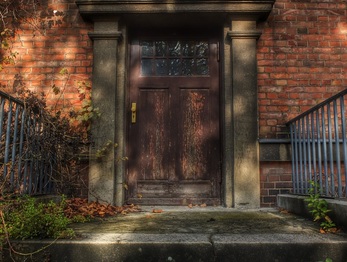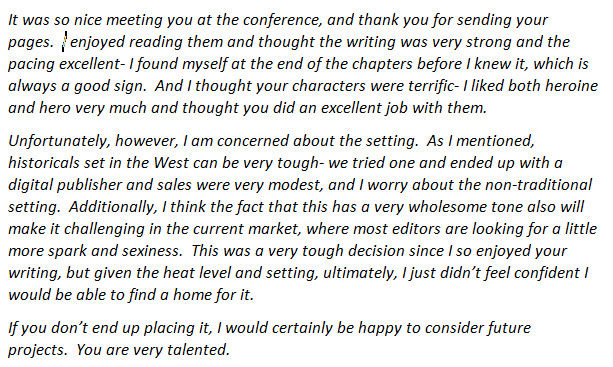|
Whenever I see an old house, one thought immediately pops into my mind. “What if walls could really talk?” What if the walls of old houses (or any old building, really) could tell you their stories? What would they say? No doubt, they could tell you about birthdays celebrated, holiday dinners – any number of family milestones. And some, should they feel so inclined, could tell you about significant historical events which occurred within their walls. But significant or not, all old houses have a story to tell. Take this one, for instance. What is its story? This looks as though it was a beautiful house at one time, someone’s pride and joy. The person who built it obviously put a lot of thought and resources into building their dream home. Look at the details on the porch railings. Look at the sheer number of porches. Look at the customized windows and the many levels. Can’t you imagine the parties which were held here? Can you imagine laughing children running up and down the stairs? Perhaps business deals being struck over cigars in a dark-paneled study? Or can you imagine women in long dresses sitting on one of those porches enjoying a beautiful view while they drank lemonade containing chunks of ice chipped off a large block to keep it cold? Maybe a romance first bloomed here, or a proposal was offered and accepted in a dark corner of a porch. The possible stories these walls could tell are endless. And look at the house now. No one has lived in this house for a long time. If one walked inside, once-elegant wallpaper is probably peeling off the walls. The banisters are no doubt thick with dust and cobwebs. The thump of footsteps now on the uncarpeted floors would stir up faint old echoes of laughing children in the hallways. And walking to the back of the house would make it obvious no one sits on the porches anymore. Vines and the brush are crowding in. Trees are encroaching on the yard. Windows are missing. The house and its stories are being swallowed up by the slow advance of nature. Still, the house fights back the only way it knows how, standing tall and dignified even as it slowly gives way, conceding one lost memory at a time. No one loves it anymore, but it still has hope. If houses had emotions, this one would be sad and abandoned. It is waiting for someone to rescue it from this slow slide into obscurity. It wants to feel alive again, with new owners creating new memories. Even if that new owner opened up walls and removed the woodwork and remodeled it into something unrecognizable, it wouldn’t matter, because the house would have a purpose again. But until that day comes, these walls still have the stories they could tell, if someone cared to listen. What stories do you think this house would tell?
2 Comments
:emember those two agents I mentioned in my last blog? Not only did I get a nice personal acknowledgment from one when she received my query, she read my submittal and replied back on the very next business day. What a classy lady! Unfortunately, her ultimate decision regarding my western historical romance wasn’t the one I was hoping for, but the rest of her letter was so kind and complimentary, I almost didn’t mind. Hers was the nicest rejection letter I have ever seen. Believe it or not, in this business, there is such a thing as a “good” rejection, and hers was one of the best. You see, when a writer is starting out and just beginning to learn their craft, the first few rejection letters are likely to be brief form letters. Later, the writer might start getting rejection letters which are slightly personalized in some way – a sign that the writing has improved. Still later, the rejection letter might have suggestions for improving the story or indicate the agent/editor nearly accepted it. This is the next milestone on a writer’s path to becoming a published author – a “good” rejection. I thought I would share the body of the letter with you, so you can see what I mean: Isn’t this a nice letter? Best of all is the line near the end, where the agent stated she would be happy to look at other stories I write. I will continue to submit to other agents, but if I don’t have an agent by the time I get a portion of my next story written, I will definitely take her up on that offer. Who wouldn’t want to work with a person who is not only highly-skilled, but also down right nice? I’d love to hear anyone else’s thoughts on the query process and “good” rejection letters. - Karen  A week ago, I blogged about how much writers dislike writing query letters. Perhaps that blog cleared some of the clutter from my mind, because I was able to later rewrite my query letter into something that I thought (hoped) wasn’t too terribly shabby. I tweaked that letter a few more times during the week, with the assistance of some writer friends. (In my opinion, being willing to not just accept but ask for feedback from others is one of a writer’s greatest assets. And believe me, I have used that asset a lot lately.) The result is a letter with a bit more verve and pizzazz than my old letter had. It might even be ready to use. This caused a whole new batch of emotions. Before, I was almost dreading the act of sitting down and writing the letter. Now the letter is done, I am nervous about what will happen once I send it out. What if the letter isn’t as good as I hoped? What if the letter is fine, but no one wants to read my stories anyway? Because it isn’t just about the letter. A query letter is a means to open doors for a story. When someone receives my query letter, they aren’t just judging the letter; I am inviting them to judge one of my historical romances. Writers often joke that our stories are like our “babies” because we have invested so much time and effort and emotion into them. So once that query letter door is opened, someone will give my story – my baby – a long look up and down, and will either invite it in for more consideration or will slam the door in its face. The waiting for the slam can be nerve-wracking. I sent two query letters out into the big wide world yesterday. Don’t get me wrong; I met both agents at a conference recently and they both seem like lovely people. If they must close the door, I am sure they will do it as kindly as they can. And since it has only been one day, it is much too soon to wonder if they looked at my letter or my story yet. After all, this process can take weeks. But I know that as time goes on, I’ll start to wonder more about the status of the queries I sent. Are they still sitting on the doorstep? Have they been invited in because someone likes my hero and heroine? Are they making their way home as rejections? One cure for the waiting is to send out more queries. The more time I spend preparing other queries to send out, the less time I will have to worry about each individual one. So that is my plan for the coming weeks. I have a list of agents who could potentially be a good fit for me and my stories, and I will start sending query letters to the agents on this list. Sooner or later, one of them will open the door. I will keep you posted on how my babies fare. |
AuthorI write historical fiction, and I invite you to share the journey to published author with me. Archives
December 2022
Categories |


 RSS Feed
RSS Feed
